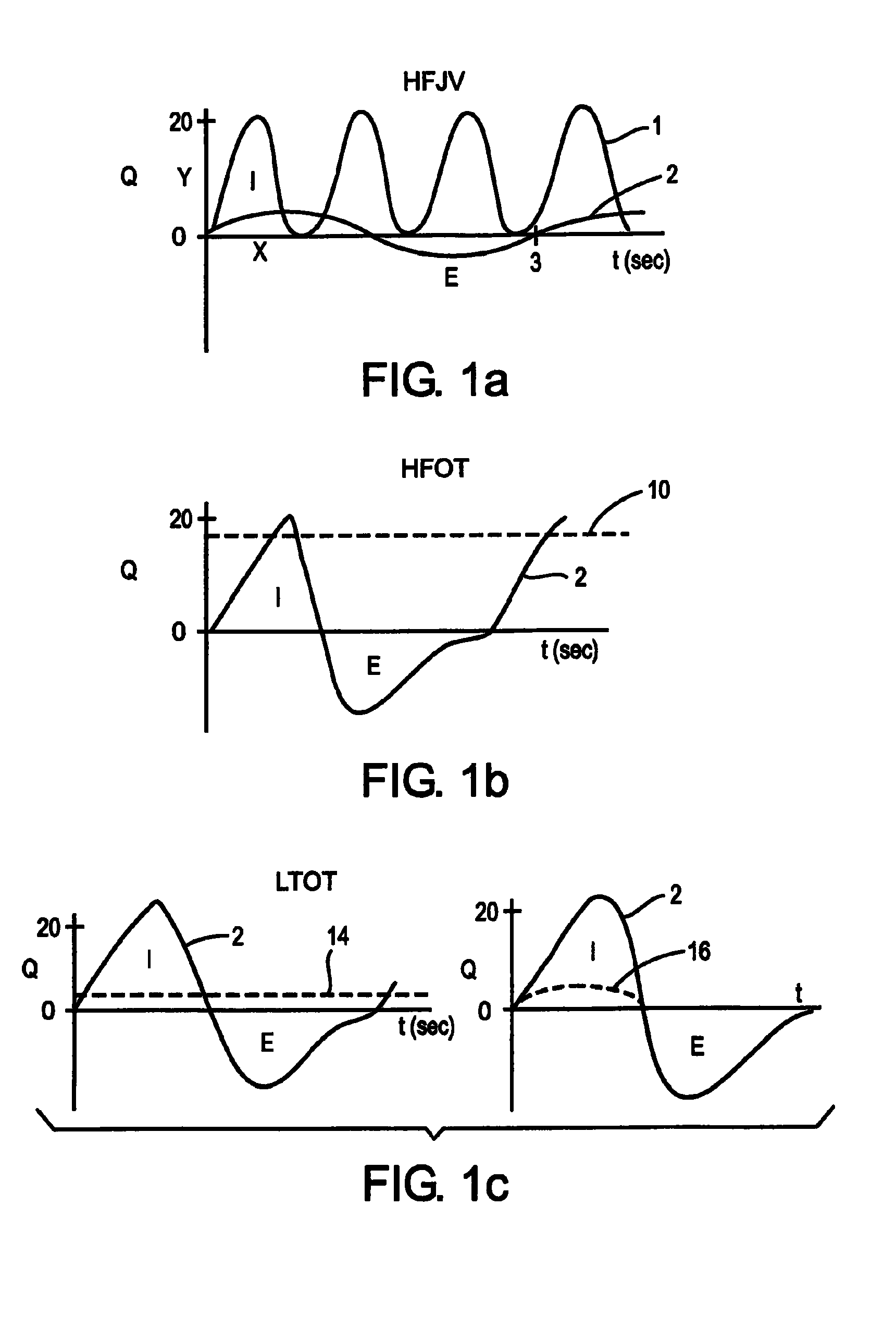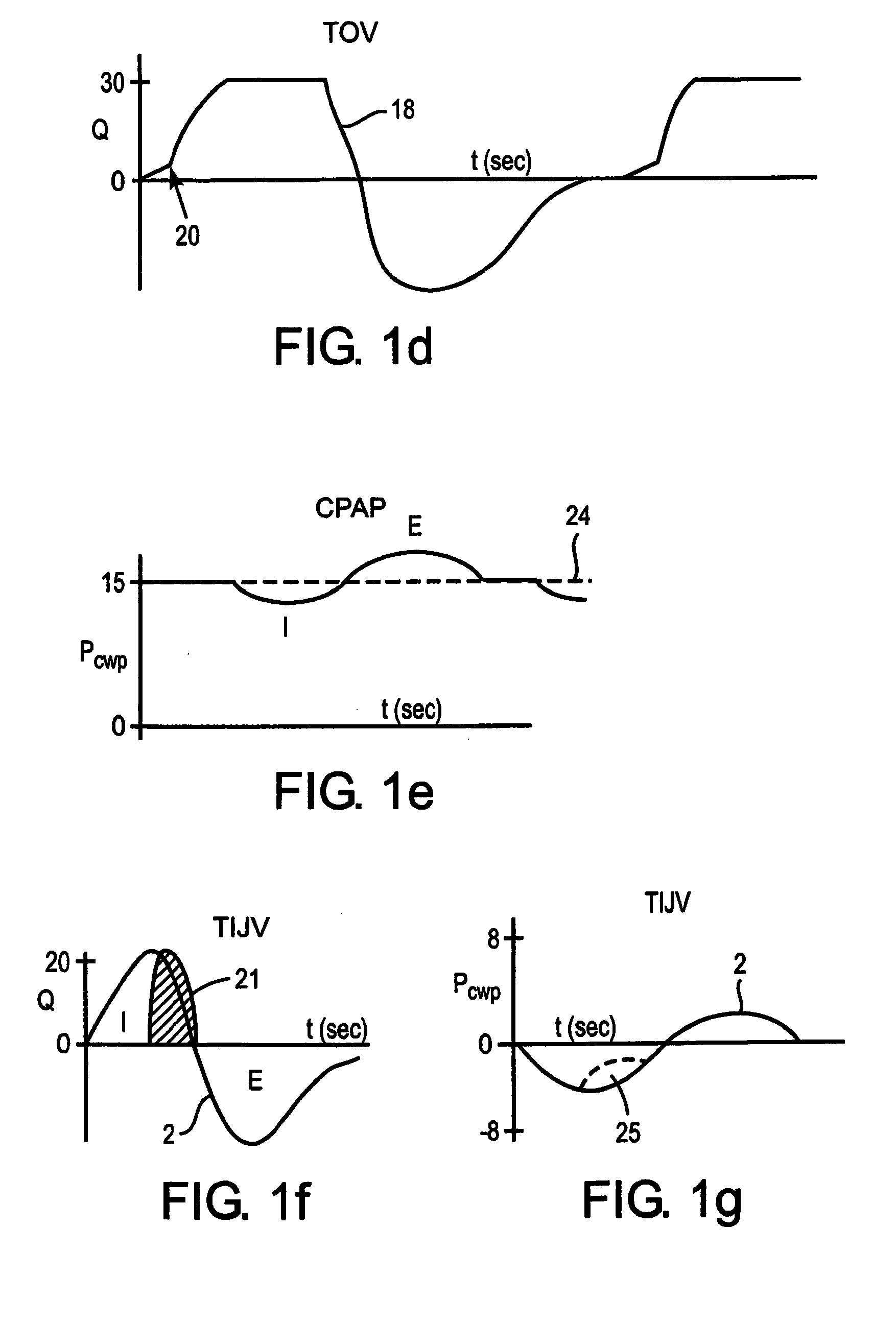Methods and devices for minimally invasive respiratory support
a respiratory support and minimally invasive technology, applied in the direction of valve operating means/release devices, instruments, process and machine control, etc., can solve the problems of respiratory impairment patients being under-oxygenated, reducing oxygen consumption, and other health problems
- Summary
- Abstract
- Description
- Claims
- Application Information
AI Technical Summary
Benefits of technology
Problems solved by technology
Method used
Image
Examples
Embodiment Construction
[0067]FIG. 1 and Tables 1 and 2 describe the ventilation therapy of the present invention in contrast to conventional therapies. In a main embodiment of the invention a ventilation method is described in which a patient's respiration is augmented by certain ventilation-oxygen delivery parameters, delivered directly into the trachea with an indwelling percutaneous transtracheal catheter coupled to a highly compact light weight portable ventilation apparatus worn or carried by the patient, subsequently referred to as Transtracheal inspiratory-synchronized jet-augmented ventilation (TIJV). Jet pulses of gas are delivered into the trachea in synchrony with the patient's inspiratory phase.
[0068]FIGS. 1f and 1g describe TIJV and for comparison FIGS. 1a-1e describe the conventional therapies. In FIG. 1a, HFJV is shown, indicating the patient breathing flow curve 2 at around 20 breaths per minute. The Jet Ventilator flow curve 1 is asynchronous with the patient's breath cycle and cycling at...
PUM
 Login to View More
Login to View More Abstract
Description
Claims
Application Information
 Login to View More
Login to View More - R&D
- Intellectual Property
- Life Sciences
- Materials
- Tech Scout
- Unparalleled Data Quality
- Higher Quality Content
- 60% Fewer Hallucinations
Browse by: Latest US Patents, China's latest patents, Technical Efficacy Thesaurus, Application Domain, Technology Topic, Popular Technical Reports.
© 2025 PatSnap. All rights reserved.Legal|Privacy policy|Modern Slavery Act Transparency Statement|Sitemap|About US| Contact US: help@patsnap.com



